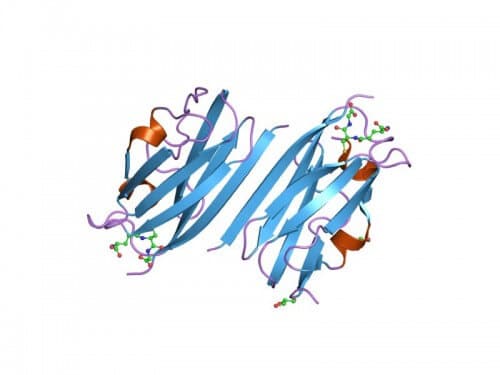Uncovering the general basis of cell adhesion may reveal to us how cancer cells sense their surroundings and migrate on surfaces of different hardness, a process that is the mechanism for the spread of tumors in the body. The research findings were published in the scientific journal Developmental Cell.

[Translation by Dr. Nachmani Moshe]
Scientists from the National University of Singapore have found the general building blocks that cells use to make initial connections with their surrounding environment. These adhesion materials are 100 nanometers in size and consist of an aggregate of about 50 integrin proteins. Uncovering the general basis of cell adhesion may reveal to us how cancer cells sense their surroundings and migrate on surfaces of different hardness, a process that is the mechanism for the spread of tumors in the body. The research findings were published in the scientific journal Developmental Cell.
Cells communicate with their environment through protein bonds called focal adhesions. These function as the hands and feet of the cell, and allow it to make physical connections with the environment that surrounds it, and thanks to this it is able to send and receive mechanical signals from the environment. These signals, in turn, initiate many actions of the cell, such as the type of cell to develop, or where the cell should move within the body. At the same time, inside the body there are a variety of different surfaces on which the cells can stick, starting with soft surfaces, such as the brain, and ending with hard surfaces, such as the bones. Although these adhesion proteins manage to adhere to both hard and soft surfaces, the mechanism of adhesion has not yet been sufficiently elucidated.
The main protein in attachment responsible for cell adhesion is integrin, which is found inside the cell membrane, and is the one that creates a connection between the inner part of the cell and its outer surface. The integrin binds to a specific sequence of three amino acids. By growing cells on hard glass or an artificial liquid membrane coated with this amino acid sequence, while observing with a high-resolution microscope, the researchers were able to examine the molecular mechanisms of cell adhesion on surfaces with different stiffness.
Analyzing the data with the help of computer calculations allowed researchers to accurately measure the degree of adhesion, and even count the number of integrins associated with each adhesion. Surprisingly, the researchers found that cells growing on a soft or hard surface form adhesions in the same way. This adhesion consists of clusters of about 50 integrins with a diameter of about 100 nanometers. Despite the small size of this initial adhesion, compared to the average size of the surface of the cell surface which is close to 3500 square micrometers, this aggregate is able to initiate initial adhesion to the environment. Surprisingly, a change in the coating density of the amino acid sequence did not cause any change in the initial adhesion formation.
In view of the fact that the initial adhesion is formed regardless of the hardness of the surface (soft or hard) and the density of the amino acid sequence, integrins are modular and universal units used by the cell to adhere to its environment. Similar to other biological building blocks, these modular units can stack together to form larger adhesion surfaces. Understanding how these primary universal adhesions produce the building blocks could provide new insights into the mechanisms of cell proliferation and development as well as disease outbreaks.
Article Summary
between its external environment.
